Food
Tea Storm Chasers: Unraveling Nature’s Brew
Tea Storm Chasers may sound like an eccentric group, but they are a dedicated community of enthusiasts

Tea Storm Chasers may sound like an eccentric group, but they are a dedicated community of enthusiasts who combine their love for tea with the thrill of chasing storms. It’s a unique blend of passion for nature and the soothing comfort of a warm cup of tea amidst the chaos of weather phenomena.
The History of Tea Storm Chasers
The concept of Tea Storm Chasers traces back to the convergence of two seemingly unrelated interests: storm chasing and tea appreciation. While storm chasing has been around for decades, the infusion of tea culture into this adventurous pursuit is a more recent development.
The Role of Tea in Storm Chasing
Tea serves as more than just a beverage for these intrepid individuals; it’s a ritual, a source of comfort, and a way to stay alert during long hours of observation. The calming effects of tea also help to mitigate the stress and adrenaline rush that come with chasing storms.
Tea Storm Chasers: Equipment and Preparation
Like any other storm chaser, Tea Storm Chasers rely on specialized equipment such as weather monitoring devices, GPS systems, and sturdy vehicles capable of navigating challenging terrain. Additionally, they carry a portable tea set, complete with a kettle, cups, and a selection of teas to suit different preferences.
Safety Measures and Protocols
Safety is paramount in storm chasing, and Tea Storm Chasers take extra precautions to ensure their well-being. They stay informed about weather forecasts, maintain communication with fellow chasers and emergency services, and always have an escape plan in place.
The Impact of Weather on Tea Production
Interestingly, the same weather patterns that Tea Storm Chasers track can also influence tea cultivation. Factors like rainfall, temperature, and sunlight exposure play a crucial role in determining the quality and quantity of tea harvests.
Tea Storm Chasers: Challenges and Adventures
Braving extreme weather conditions, navigating unfamiliar terrain, and facing unexpected obstacles are all part of the adventure for Tea Storm Chasers. Each chase brings its own set of challenges and adrenaline-fueled moments.
Famous Tea Storm Chasers
While the community of Tea Storm Chasers is relatively small, there are a few notable individuals and teams who have gained recognition for their contributions to the field. Their passion and dedication serve as inspiration for aspiring chasers.
The Future of Tea Storm Chasing
As technology advances and our understanding of weather patterns improves, the future looks promising for Tea Storm Chasers. However, there are also concerns about the impact of climate change on storm activity and tea production, which may pose challenges in the years to come.
Tea Storm Chasing: Environmental Considerations
In their pursuit of adventure, Tea Storm Chasers are mindful of the environmental impact of their activities. They strive to minimize their carbon footprint and promote sustainable practices both in storm chasing and tea consumption.
Community and Culture Among Tea Storm Chasers
Beyond the thrill of chasing storms, Tea Storm Chasers form a tight-knit community bonded by their shared interests. They exchange stories, tips, and tea recommendations, fostering a sense of camaraderie and belonging.
Tips for Aspiring Tea Storm Chasers
For those intrigued by the idea of combining tea and storm chasing, there are a few things to keep in mind. Start by familiarizing yourself with weather patterns, investing in quality equipment, and joining online forums or local groups to connect with fellow enthusiasts.
Tea Storm Chasing and Mental Health
The adrenaline rush of storm chasing can be exhilarating, but it’s essential to prioritize mental health and well-being. Tea serves as a soothing antidote to the stress and anxiety that can accompany this adventurous pursuit, providing moments of calm and reflection amidst the excitement.
The Global Tea Industry: An Overview

While Tea Storm Chasers focus on the intersection of tea and weather, it’s worth exploring the broader context of the global tea industry. From traditional tea-producing regions to emerging markets, tea plays a significant cultural and economic role worldwide.
Conclusion
Tea Storm Chasers are a unique breed of adventurers who blend the thrill of storm chasing with the comfort of a warm cup of tea. Their passion for nature, combined with their love for tea culture, creates a one-of-a-kind experience that is both exhilarating and soothing.
Unique FAQs
Are Tea Storm Chasers risking their lives by chasing storms?
While storm chasing inherently involves some level of risk, Tea Storm Chasers prioritize safety above all else. They undergo rigorous training, stay informed about weather conditions, and always have safety protocols in place.
What types of tea do Tea Storm Chasers prefer?
The choice of tea varies among individuals, but common favorites include black tea for its robust flavor and caffeine content, green tea for its antioxidant properties, and herbal teas for their calming effects.
How do Tea Storm Chasers navigate adverse weather conditions?
Tea Storm Chasers rely on advanced weather monitoring technology, local knowledge of terrain, and collaboration with fellow chasers to navigate safely through storms and extreme weather events.
Can anyone become a Tea Storm Chaser?
While anyone with a passion for both tea and adventure can technically become a Tea Storm Chaser, it’s essential to undergo proper training, acquire the necessary equipment, and prioritize safety at all times.
Do Tea Storm Chasers contribute to scientific research?
Some Tea Storm Chasers collaborate with meteorologists and researchers to gather data and observations during storm chases, contributing valuable insights to the scientific community.
Table of Contents
Food
Mango Puree: The Essence of Summer Sunshine
Mango puree is a delightful tropical concoction made from ripe, juicy mangoes. It’s not just a tasty treat;
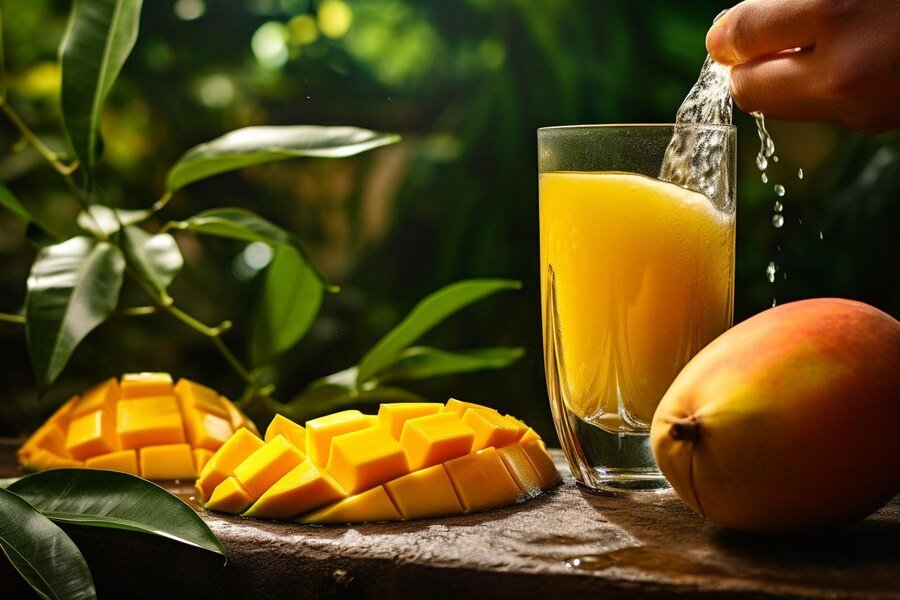
Mango puree is a delightful tropical concoction made from ripe, juicy mangoes. It’s not just a tasty treat; it’s versatile, healthy, and a quintessential ingredient in numerous culinary and beauty creations. Let’s dive into the vibrant world of mango puree and explore its uses, benefits, and much more.
Health Benefits of Mango Puree
Mangoes are loaded with essential nutrients like vitamins A, C, and E, along with antioxidants and fiber. Incorporating mango puree into your diet can boost immunity, aid digestion, and promote skin health.
How to Make Mango Puree at Home
To make fresh mango puree, choose ripe mangoes like Alphonso or Ataulfo. Peel and dice the mangoes, then blend until smooth. Optionally, add a squeeze of lime juice for a zesty twist.
Creative Uses of Mango Puree
Mango puree can elevate desserts like mango cheesecake or mango sorbet. It’s also perfect for refreshing mango smoothies or adding a tropical twist to cocktails and mocktails.
Mango Puree in Culinary Delights
Indulge in a creamy mango lassi—a traditional Indian drink—or whip up a tangy mango salsa for your tacos. The possibilities are endless with mango puree in the kitchen.
Mango Puree in Beauty Recipes
Pamper your skin and hair with homemade mango face masks or conditioners. Mango’s natural enzymes and vitamins can rejuvenate and hydrate your skin and hair.
Storing Mango Puree
Store mango puree in airtight containers in the refrigerator for up to a week. For long-term storage, freeze in ice cube trays and use as needed.
Popular Varieties of Mangoes for Puree
While Alphonso mangoes are revered for their sweetness, Ataulfo and Haden mangoes also make excellent purees due to their smooth texture and rich flavor.
Mango Puree in Global Cuisines
From Thai mango sticky rice to Mexican mango salsa, mango puree finds its way into diverse international dishes, adding a tropical flair to every bite.
Buying Mango Puree
You can purchase mango puree from online vendors or find it in the freezer section of your local grocery store. Look for purees without added sugars or preservatives for the best quality.
Tips for Cooking with Mango Puree
Experiment with mango puree in marinades, dressings, or even glazes for meats. Its sweet, tangy profile pairs beautifully with both savory and sweet dishes.
Mango Puree for Babies and Toddlers
Introduce the goodness of mangoes early on by preparing smooth mango purees for infants. It’s a delicious way to introduce new flavors and essential nutrients.
Mango Puree in Beverage Industry
Mango puree is a staple in the beverage industry, used to flavor smoothies, teas, and even craft beers. Its tropical taste is universally loved.
Mango Puree: A Sustainable Choice

Opt for mango puree packaged in eco-friendly containers to support sustainable practices and local farmers who grow these delightful fruits.
Conclusion
Mango puree is more than just a fruity indulgence; it’s a culinary and wellness essential. Whether you’re blending it into a smoothie, stirring it into a sauce, or applying it to your skin, mango puree brings the taste of summer to your table year-round.
FAQs
Is mango puree good for weight loss?
Mango puree is nutritious but should be consumed in moderation as part of a balanced diet.
Can I use frozen mangoes to make mango puree?
Yes, frozen mangoes work well for making puree and retain their flavor and nutrients.
Does mango puree contain added sugars?
It’s best to check the label; pure mango puree should not contain added sugars.
How can I use mango puree in baking?
Mango puree can replace some of the fat or liquids in recipes like muffins or cakes for a tropical twist.
Can I use mango puree on my face every day?
Using a mango face mask a few times a week can be beneficial, but daily use may not be necessary.
Table of Contents
Food
Cornichons: Tiny Pickles with Big Flavor
If you’re a fan of pickles, you’ve probably encountered the delightful tanginess of cornichons.
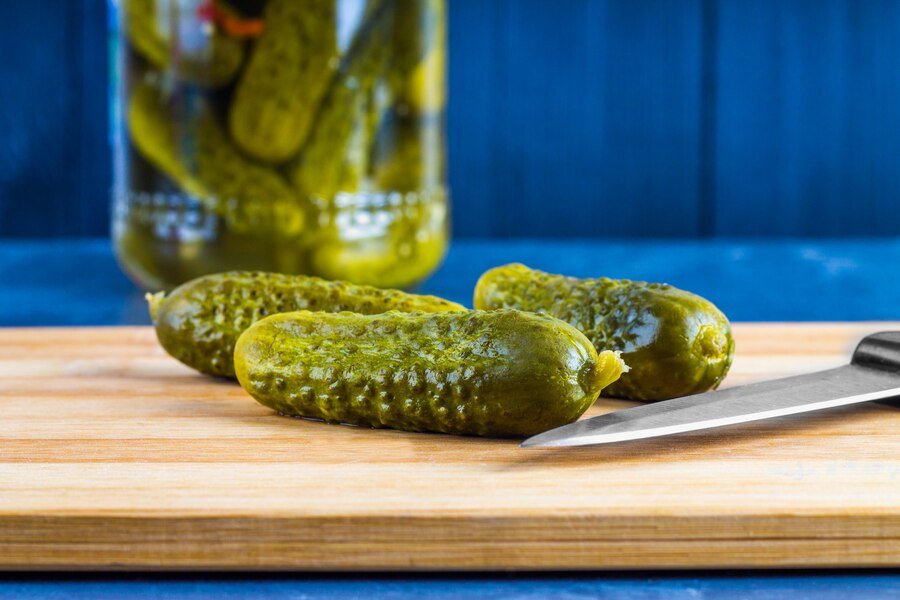
If you’re a fan of pickles, you’ve probably encountered the delightful tanginess of cornichons. These tiny pickles pack a punch of flavor that adds a unique twist to dishes. But what exactly are cornichons, and how do they differ from regular pickles?
What Are Cornichons?
Cornichons are small pickled cucumbers, typically measuring around 1-2 inches in length. Originating from France, they are harvested while still young and crisp, then pickled in a brine solution flavored with herbs and spices.
History and Origin of Cornichons
The history of cornichons traces back to France, where they have been a staple in French cuisine for centuries. The word “cornichon” itself translates to “gherkin” in English, referring to the small size of these pickles.
In French Cuisine
In French cuisine, cornichons are commonly served alongside charcuterie boards, cheese platters, and as a garnish for dishes like pâtés and terrines.
In Other International Cuisines
Beyond France, cornichons have found their way into various international cuisines, adding a burst of acidity and crunch to dishes like sandwiches, salads, and even cocktails.
Nutritional Value of Cornichons
Cornichons are low in calories and fat but pack a punch in terms of flavor. They are also a good source of fiber, vitamin K, and antioxidants.
Health Benefits of Cornichons
Despite their small size, cornichons offer some health benefits. Their high fiber content promotes digestion, while antioxidants help combat oxidative stress in the body.
How to Make Cornichons at Home
Making cornichons at home is relatively simple. Start by selecting small, firm cucumbers and brining them in a mixture of vinegar, water, salt, and spices. Let them pickle for a few days to develop their signature flavor.
Buying and Storing Cornichons
Cornichons are readily available at most grocery stores, typically found in the condiment aisle alongside other pickled products. Once opened, store them in the refrigerator to maintain their freshness and crunch.
Cornichons vs. Pickles: What’s the Difference?
While both cornichons and pickles are made from cucumbers, there are some key differences. Cornichons are smaller, firmer, and tangier than traditional pickles, with a more pronounced flavor profile.
Popular Cornichon Recipes
From tangy potato salads to zesty tartar sauces, cornichons are a versatile ingredient that can elevate a wide range of dishes. Try incorporating them into your favorite recipes for a burst of flavor.
Cornichons in Popular Culture
Cornichons have made appearances in popular culture, often as a symbol of sophistication and culinary prowess. From fancy dinner parties to chic cocktail bars, these tiny pickles add a touch of elegance to any occasion.
Cornichons: A Versatile Ingredient
Whether you’re a gourmet chef or a home cook, cornichons are a versatile ingredient that can inspire creativity in the kitchen. Experiment with different dishes and flavor combinations to discover new ways to enjoy these tiny pickles.
Serving Suggestions for Cornichons
Serve cornichons alongside your favorite cheeses and charcuterie for a classic French-inspired snack. Alternatively, chop them up and add them to salads, sandwiches, or relish trays for an extra burst of flavor.
Are Cornichons Vegan?
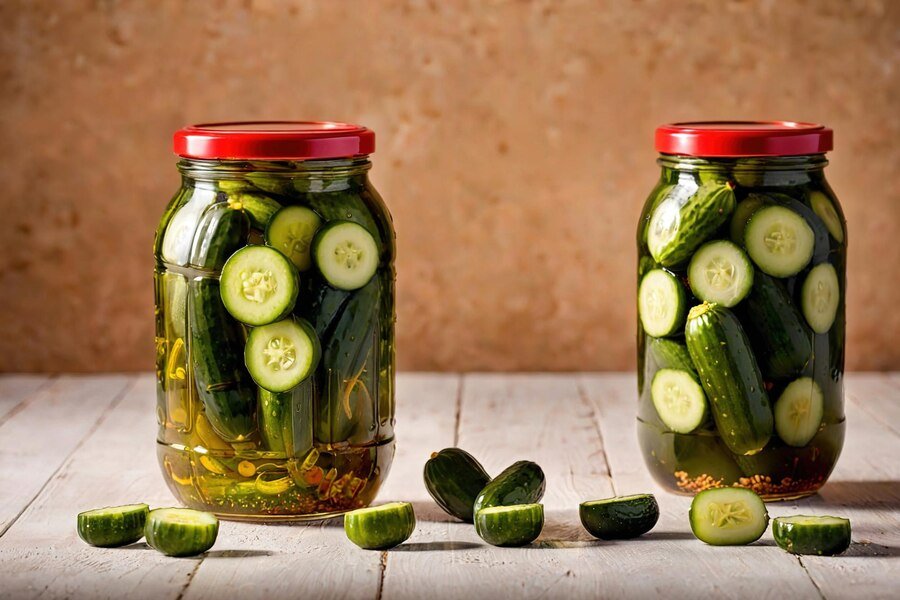
Yes, cornichons are typically vegan-friendly, as they are made from cucumbers and pickled in a brine solution that does not contain animal products.
Conclusion
Cornichons may be small in size, but they offer big flavor and versatility in the kitchen. Whether enjoyed on their own or as a flavorful addition to dishes, these tiny pickles are sure to delight your taste buds.
FAQs
Are cornichons the same as pickles?
While both are made from cucumbers, cornichons are smaller, firmer, and more tangy than traditional pickles.
Can I make cornichons at home?
Yes, making cornichons at home is relatively simple and requires just a few ingredients.
Are cornichons healthy?
Cornichons are low in calories and fat and offer some health benefits due to their fiber and antioxidant content.
How long do cornichons last in the refrigerator?
When stored properly, cornichons can last for several months in the refrigerator.
What are some popular ways to serve cornichons?
Cornichons can be served alongside cheese and charcuterie, chopped up in salads, or used as a garnish for various dishes.
Table of Contents
Food
Chile Serrano: A Spicy Delight Worth Exploring
Chile Serrano, a staple in Mexican cuisine and beloved by spicy food enthusiasts worldwide, is more than just a pepper;

Chile Serrano, a staple in Mexican cuisine and beloved by spicy food enthusiasts worldwide, is more than just a pepper; it’s a cultural icon. Originating from the mountainous regions of Mexico, this small, green chili packs a punch of flavor and heat. Let’s delve into the world of Chile Serrano, exploring its culinary uses, nutritional benefits, and much more.
Nutritional Profile of Chile Serrano
Chile Serrano is not only renowned for its fiery taste but also for its nutritional value. Rich in vitamins C and A, as well as minerals like potassium and manganese, these peppers offer numerous health benefits. They are known to boost immunity, improve digestion, and even aid in weight loss.
Culinary Uses of Chile Serrano
In Mexican cuisine, Chile Serrano is a ubiquitous ingredient, adding depth and spice to dishes such as salsa, guacamole, and tacos. Its versatility extends beyond traditional Mexican fare, with modern recipes incorporating it into salads, marinades, and even cocktails for an extra kick.
Growing Chile Serrano
To cultivate thriving Chile Serrano plants, providing ample sunlight, well-drained soil, and consistent watering is essential. With proper care and maintenance, these pepper plants can flourish, yielding a bountiful harvest of vibrant green chilies.
Harvesting and Storage
Harvesting Chile Serrano peppers at their peak ripeness ensures optimal flavor and heat. Once harvested, proper storage techniques, such as refrigeration or drying, can prolong their shelf life, allowing for year-round enjoyment.
Varieties of Chile Serrano
From the mild to the intensely spicy, Chile Serrano comes in various shapes, sizes, and heat levels. Regional variations in flavor and intensity offer a diverse array of options for culinary experimentation.
Chile Serrano in Mexican Cuisine
In Mexican culinary traditions, Chile Serrano holds a revered status, featuring prominently in dishes like salsa verde, mole, and pozole. Its bold flavor and heat add depth to traditional recipes, embodying the essence of Mexican gastronomy.
Culinary Tips and Tricks
When cooking with Chile Serrano, experimenting with different cooking techniques and flavor pairings can elevate dishes to new heights. Whether roasted, grilled, or raw, these peppers infuse dishes with a vibrant spiciness that tantalizes the taste buds.
Chile Serrano in Popular Culture
Beyond the kitchen, Chile Serrano has permeated popular culture, appearing in literature, music, and art as a symbol of vitality and passion. Its presence in various forms of media reflects its cultural significance and enduring appeal.
Health Risks and Precautions
While Chile Serrano offers numerous health benefits, it’s essential to be mindful of potential risks, such as allergic reactions or gastrointestinal discomfort, particularly for individuals with sensitivities to spicy foods.
Sustainability and Environmental Impact
As demand for Chile Serrano continues to grow, sustainable farming practices and environmental stewardship are crucial for preserving the ecosystems in which these peppers thrive. Adopting eco-friendly farming techniques can mitigate the environmental impact of cultivation.
Global Market and Economic Importance
The global market for Chile Serrano is robust, with significant exports from Mexico to countries worldwide. Its economic importance extends beyond culinary uses, contributing to the livelihoods of farmers and bolstering local economies.
DIY Chile Serrano Recipes
For adventurous home cooks, experimenting with DIY Chile Serrano recipes opens up a world of culinary possibilities. From homemade salsas to pickled peppers, there’s no shortage of creative ways to incorporate these fiery gems into your kitchen creations.
Future Trends and Innovations

As consumer tastes evolve and culinary trends shift, the future of Chile Serrano holds exciting possibilities. From innovative uses in gourmet cuisine to advancements in agricultural technology, the journey of Chile Serrano is far from over.
Conclusion
Chile Serrano stands as a testament to the rich tapestry of flavors and traditions in Mexican cuisine. From its humble origins to its global culinary influence, this small but mighty pepper continues to captivate palates and inspire culinary creativity.
FAQs
Are Chile Serrano peppers very spicy?
While Chile Serrano peppers are known for their heat, the level of spiciness can vary depending on factors such as ripeness and variety.
Can I substitute Chile Serrano with other types of chili peppers?
Yes, if you can’t find Chile Serrano peppers, you can substitute them with similar varieties like jalapeños or serranos.
How should I handle Chile Serrano peppers to minimize skin irritation?
Wearing gloves and avoiding contact with the eyes or sensitive skin can help minimize irritation when handling Chile Serrano peppers.
What are some creative ways to use Chile Serrano peppers in cooking?
Besides traditional dishes like salsa and guacamole, Chile Serrano peppers can be used to add heat and flavor to soups, stir-fries, and even desserts.
Are Chile Serrano peppers good for you?
Yes, Chile Serrano peppers are rich in vitamins and antioxidants, making them a nutritious addition to your diet when consumed in moderation.
Table of Contents
Food
Beef Tripe: A Versatile and Nutritious Organ Meat
Beef tripe is a unique and versatile organ meat that has been a part of various culinary traditions around the world.
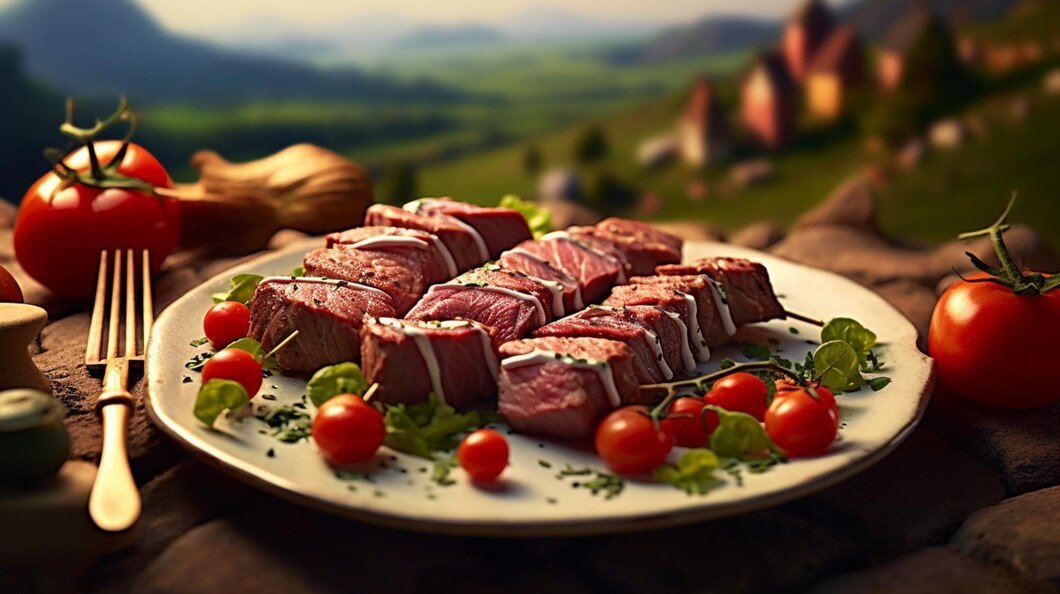
Beef tripe is a unique and versatile organ meat that has been a part of various culinary traditions around the world. It offers a distinctive texture and flavor, making it a sought-after ingredient in many dishes. In this article, we will explore the different aspects of beef tripe, from its types and culinary uses to its nutritional benefits and cooking methods.
Beef tripe refers to the edible stomach lining of cattle. It is known for its chewy texture and ability to absorb flavors, making it popular in soups, stews, and other dishes. Despite its initial unfamiliarity to some, beef tripe has a rich history and is valued for its taste and nutritional profile.
What is Beef Tripe?
Beef tripe is categorized into different types based on the section of the stomach it comes from and its appearance. The most common types include honeycomb tripe (from the reticulum), book tripe (from the omasum), and leaf tripe (from the rumen).
Types of Beef Tripe
Honeycomb Tripe: Recognizable for its hexagonal pattern, honeycomb tripe is from the second stomach chamber.
Book Tripe: This type of tripe is smooth and resembles stacked pages, coming from the third chamber of the stomach.
Leaf Tripe: Leaf tripe is large and flat, originating from the first stomach compartment.
Culinary Uses of Beef Tripe
Beef tripe is a staple ingredient in many traditional dishes worldwide. It is prized for its ability to add texture and absorb flavors from seasonings and spices.
Nutritional Value of Beef Tripe
Despite being relatively low in calories, beef tripe is a good source of protein and essential nutrients such as iron, zinc, and vitamin B12.
Health Benefits of Consuming Beef Tripe
Consuming beef tripe can aid in digestive health due to its collagen content, which supports gut integrity and may benefit joint health.
Preparation and Cooking Tips
Before cooking, beef tripe requires thorough cleaning to remove residual debris and odors. It is often boiled or simmered for an extended period to achieve tenderness.
Common Misconceptions about Beef Tripe
Some misconceptions about beef tripe include its toughness and strong odor, which can be managed through proper cleaning and cooking techniques.
Where to Buy Beef Tripe
Beef tripe can be sourced from local butcher shops, ethnic markets, or specialty stores that cater to culinary enthusiasts.
Recipe: Beef Tripe Soup
One popular way to enjoy beef tripe is in a hearty soup. Here’s a simple recipe to try:
Ingredients:
1 lb cleaned beef tripe, sliced
1 onion, chopped
2 carrots, diced
2 celery stalks, chopped
4 cups beef broth
Salt and pepper to taste
Fresh parsley for garnish
Cooking Instructions:
In a large pot, sauté onions, carrots, and celery until softened.
Add beef tripe and beef broth. Simmer for 1-2 hours until tripe is tender.
Season with salt and pepper.
Serve hot, garnished with fresh parsley.
Cultural Significance of Beef Tripe
In many cultures, beef tripe holds cultural and symbolic significance, often featured in festive dishes and celebrations.
Comparison with Other Organ Meats
Beef tripe differs from other organ meats like liver, kidney, and heart in texture and taste, offering a unique culinary experience.
Challenges in Cooking with Beef Tripe
The main challenge with beef tripe lies in its preparation, requiring time and effort to clean thoroughly and cook to desired tenderness.
Beef Tripe in Modern Cuisine

Contemporary chefs are exploring innovative ways to incorporate beef tripe into modern dishes, blending traditional flavors with new culinary techniques.
Conclusion
Beef tripe is more than just a culinary curiosity—it’s a nutrient-dense ingredient with a storied history in global cuisines. Whether enjoyed in traditional soups or reimagined in fusion recipes, beef tripe continues to intrigue and delight adventurous food enthusiasts.
FAQs
Is beef tripe healthy to eat?
Beef tripe is a good source of protein and essential nutrients, making it a healthy addition to a balanced diet when prepared properly.
How do you clean beef tripe?
Cleaning beef tripe involves rinsing it thoroughly under cold water and removing any excess fat or debris.
What does beef tripe taste like?
Beef tripe has a mild flavor and a chewy texture that absorbs the flavors of spices and seasonings during cooking.
Can I freeze beef tripe?
Yes, beef tripe can be frozen for future use. Store it in an airtight container to maintain freshness.
Are there vegetarian alternatives to beef tripe?
While there are no direct vegetarian substitutes for beef tripe, some recipes use vegetables or tofu to mimic its texture in dishes.
Table of Contents
Food
Food Trailer: A Mobile Culinary Adventure
In recent years, the food industry has witnessed a significant rise in the popularity of food trailer.

In recent years, the food industry has witnessed a significant rise in the popularity of food trailers. These mobile eateries offer a unique culinary experience, bringing delicious meals to diverse locations. From urban streets to rural festivals, food trailers have become an integral part of the gastronomic landscape. In this article, we’ll explore the world of food trailers, from their humble beginnings to their thriving present, and delve into the essentials of starting and running a successful food trailer business.
History and Evolution of Food Trailers
Food trailers trace their origins back to the early 20th century when pushcarts and wagons were used to sell snacks and refreshments in bustling city streets. Over time, these humble setups evolved into more sophisticated trailers equipped with kitchens and dining areas. The 21st century witnessed a surge in food truck culture, with entrepreneurs embracing the mobility and flexibility offered by these vehicles to reach customers in various locations.
Conventional Food Trailers
Conventional food trailers typically consist of a stationary structure equipped with kitchen facilities. These trailers are often set up in fixed locations such as parks, markets, or commercial districts. They offer a wide range of menu options and provide seating for customers to enjoy their meals on-site.
Specialty Food Trailers
Specialty food trailers focus on niche cuisines or specific food items, catering to a targeted audience. Examples include gourmet burger trailers, artisanal pizza trailers, and dessert trailers offering specialty cakes and pastries. These trailers often attract food enthusiasts seeking unique dining experiences.
Mobile Food Trucks
Mobile food trucks are perhaps the most versatile type of food trailer, with the ability to travel to different locations and events. These trucks are equipped with kitchen facilities and serve a variety of dishes to customers on the go. They are particularly popular at festivals, concerts, and corporate events.
Advantages of Starting a Food Trailer Business
The food trailer business offers several advantages for aspiring entrepreneurs. Firstly, the startup costs are relatively lower compared to opening a brick-and-mortar restaurant. Additionally, food trailers provide flexibility in terms of location, allowing owners to explore different markets and target demographics. Moreover, the mobile nature of food trailers enables owners to adapt quickly to changing trends and consumer preferences.
Location
Choosing the right location is crucial for the success of a food trailer business. Owners should conduct thorough research to identify high-traffic areas with potential customers. Factors such as foot traffic, nearby attractions, and competitor presence should be taken into account when selecting a location.
Permits and Regulations
Operating a food trailer requires adherence to various permits and regulations imposed by local authorities. Owners must obtain licenses for food handling, parking, and health inspections to ensure compliance with safety standards. Familiarizing oneself with local regulations is essential to avoid legal complications.
Menu Planning
Crafting a diverse and appealing menu is essential for attracting customers to a food trailer. Owners should consider factors such as food trends, dietary preferences, and ingredient availability when designing their menu. Offering unique and innovative dishes can set a food trailer apart from competitors and generate repeat business.
Budgeting and Financing
Launching a food trailer business requires careful financial planning to cover expenses such as vehicle purchase or rental, equipment acquisition, and marketing costs. Owners should create a detailed budget outlining startup expenses and projected revenue to secure financing from investors or lenders.
Design and Layout of a Food Trailer
The design and layout of a food trailer play a crucial role in attracting customers and optimizing workflow. Owners should prioritize functionality and aesthetics when customizing their trailers, ensuring ample space for food preparation, storage, and customer service. Attention should also be paid to branding elements such as logos, signage, and menu boards to create a memorable visual identity.
Equipment and Supplies Needed
Equipping a food trailer with the necessary tools and supplies is essential for efficient operations. Basic equipment includes cooking appliances, refrigeration units, storage containers, and serving utensils. Owners should invest in high-quality, durable equipment to withstand the rigors of mobile catering and maintain food safety standards.
Marketing Strategies for Food Trailers
Effective marketing is essential for attracting customers to a food trailer business. Owners can leverage various strategies to increase visibility and generate buzz around their brand.
Social Media Marketing
Utilizing social media platforms such as Instagram, Facebook, and Twitter is an effective way to engage with potential customers and promote upcoming events or specials. Owners should regularly post engaging content such as mouthwatering food photos, behind-the-scenes glimpses, and customer testimonials to build a loyal following.
Partnerships and Collaborations
Collaborating with local businesses, event organizers, and influencers can expand the reach of a food trailer and attract new customers. Partnerships with complementary businesses such as breweries, wineries, or music venues can lead to mutually beneficial promotional opportunities and increased foot traffic.
Events and Festivals
Participating in events and festivals is a great way to showcase a food trailer’s offerings to a large audience. Owners should research upcoming events in their area and apply for vendor opportunities to capitalize on the influx of attendees. Offering exclusive menu items or discounts can entice event-goers to visit the trailer and sample its cuisine.
Customer Engagement and Retention
Building strong relationships with customers is key to the long-term success of a food trailer business. Owners should prioritize excellent customer service, ensuring prompt and friendly interactions with every customer. Implementing loyalty programs, offering discounts to repeat customers, and soliciting feedback can help foster customer loyalty and encourage repeat business.
Challenges and Solutions in the Food Trailer Business
While the food trailer business offers numerous opportunities for success, it also presents challenges that owners must navigate effectively.
Success Stories in the Food Trailer Industry

Despite the challenges, many entrepreneurs have achieved remarkable success in the food trailer industry. From humble beginnings, these trailblazers have built thriving businesses that have become beloved fixtures in their communities.
Future Trends and Innovations
The future of the food trailer industry looks promising, with continued innovation and adaptation to changing consumer preferences. From eco-friendly practices to advanced technology integration, food trailer owners are constantly exploring new ways to enhance their offerings and stay ahead of the curve.
Conclusion
Food trailers represent a dynamic and exciting sector of the food industry, offering entrepreneurs a mobile platform to showcase their culinary creations and connect with customers in diverse settings. By understanding the essentials of starting and running a food trailer business, aspiring entrepreneurs can embark on a rewarding journey filled with delicious food, memorable experiences, and entrepreneurial success.
Table of Contents
Food
Vermicelli: Exploring the Versatile Pasta Alternative
Vermicelli If you’ve ever ventured down the pasta aisle of your local grocery store, you might have come across a thin,
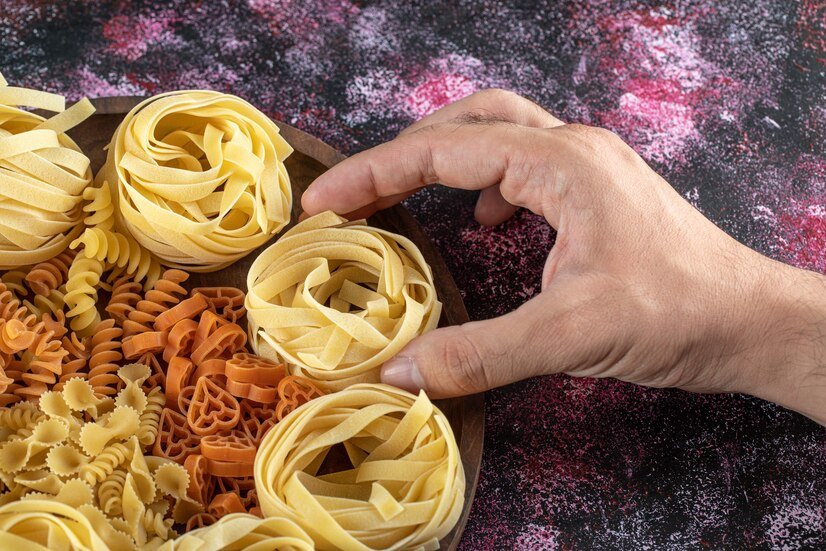
If you’ve ever ventured down the pasta aisle of your local grocery store, you might have come across a thin, thread-like pasta known as vermicelli. Often overshadowed by its more popular pasta counterparts, vermicelli holds its own unique place in the culinary world, offering versatility and a delightful texture to a variety of dishes.
A Brief Introduction to Vermicelli
Vermicelli, deriving its name from the Italian word “vermicello” meaning little worms, is a type of pasta that is thinner than spaghetti but thicker than angel hair pasta. It has a long history, with origins tracing back to Italy where it was traditionally made with wheat flour. However, vermicelli is now enjoyed worldwide and is made from various ingredients such as rice, mung bean starch, or wheat.
Types of Vermicelli
Vermicelli comes in different forms and sizes, varying from region to region. In Asian cuisine, rice vermicelli is popular, while in Mediterranean and Middle Eastern cuisines, wheat-based vermicelli is more common. The thickness of vermicelli can also vary, with some types being as thin as angel hair pasta and others slightly thicker.
Culinary Uses of Vermicelli
Vermicelli is a versatile ingredient used in a multitude of dishes. In Asian cuisine, it is often featured in soups, stir-fries, and noodle salads. In Mediterranean cooking, it is used in pilafs and stews, adding texture and flavor to the dish. Additionally, vermicelli is a staple ingredient in Middle Eastern delicacies such as kanafeh, a popular dessert.
Nutritional Value of Vermicelli
Despite its delicate appearance, vermicelli packs a nutritional punch. It is a good source of carbohydrates, providing energy to fuel your day. Additionally, it contains essential vitamins and minerals such as iron and B vitamins, contributing to overall health and well-being.
Cooking Methods for Vermicelli
Vermicelli can be cooked using various methods, including boiling, stir-frying, and baking. Boiling is the most common method, where vermicelli is cooked in boiling water until tender. Stir-frying vermicelli with vegetables and protein creates flavorful noodle dishes, while baking vermicelli in casseroles and desserts adds a unique twist to traditional recipes.
Vermicelli in Different Cultures
Vermicelli plays a significant role in the culinary traditions of many cultures. In Asian cuisine, it is featured in iconic dishes such as Vietnamese pho and Thai pad thai. In Mediterranean cuisine, vermicelli is used in dishes like Greek pastitsio and Italian pasta salads. Middle Eastern cuisine showcases vermicelli in desserts like Turkish kunafa and Lebanese meghli.
Vermicelli in Desserts
One of the most delightful uses of vermicelli is in desserts. Sweet vermicelli dishes are popular in many cultures, often featuring ingredients like sugar, nuts, and spices. Examples include Indian seviyan kheer, a creamy pudding made with vermicelli, and Turkish helva, a sweet confection made with roasted vermicelli and honey.
Vermicelli as a Gluten-Free Alternative
For those with gluten intolerance or sensitivity, vermicelli made from rice or other gluten-free grains serves as an excellent alternative to traditional wheat-based pasta. Its light texture and neutral flavor make it a versatile option for gluten-free cooking, allowing individuals to enjoy their favorite pasta dishes without worry.
Vermicelli Brands and Availability
Vermicelli can be found in most grocery stores, typically in the pasta or international foods aisle. Popular brands include Barilla, De Cecco, and Annie Chun’s. Additionally, specialty food stores and online retailers offer a wide selection of vermicelli varieties, including organic and gluten-free options.
Tips for Cooking Perfect Vermicelli Dishes
Cooking vermicelli to perfection requires attention to detail. Whether boiling, stir-frying, or baking, it’s essential to follow cooking instructions carefully and avoid overcooking, which can result in mushy noodles. Adding flavorful broths, sauces, and seasonings enhances the taste of vermicelli dishes, making them even more delicious.
Vermicelli in Street Food Culture
Street food vendors around the world embrace vermicelli as a key ingredient in their culinary creations. From Vietnamese street stalls serving steaming bowls of pho to Indian food carts offering spicy vermicelli upma, vermicelli-based street food dishes tantalize taste buds and provide a satisfying meal on the go.
Vermicelli in Contemporary Cuisine
Innovative chefs and home cooks alike are finding creative ways to incorporate vermicelli into modern dishes. From vermicelli-stuffed spring rolls to vermicelli-crusted fish, the possibilities are endless. Experimenting with different flavor combinations and cooking techniques allows for the discovery of new and exciting vermicelli recipes.
Vermicelli Recipes for Different Occasions
Whether you’re looking for a quick weekday meal or planning a special dinner party, vermicelli offers a wide range of recipe options. Simple stir-fries and noodle soups are perfect for busy nights, while elegant pasta salads and casseroles are ideal for entertaining guests. With vermicelli, there’s a dish for every occasion.
Vermicelli’s Role in a Balanced Diet

Incorporating vermicelli into a balanced diet adds variety and nutrition to meals. Its low-fat and low-calorie profile make it a healthy choice for those watching their weight, while its versatility allows for endless culinary creativity. Pairing vermicelli with lean proteins, vegetables, and healthy fats creates satisfying and nutritious meals for the whole family.
Conclusion
vermicelli is a versatile and delicious ingredient that deserves a place in every kitchen. Whether used in traditional Asian dishes, Mediterranean classics, or innovative fusion recipes, vermicelli adds texture, flavor, and nutritional value to meals. With its wide availability and ease of preparation, vermicelli offers endless possibilities for culinary exploration.
FAQs (Frequently Asked Questions)
Is vermicelli gluten-free?
Some varieties of vermicelli made from rice or other gluten-free grains are gluten-free. However, it’s essential to check the packaging to ensure it meets dietary requirements.
How should I store vermicelli?
Vermicelli should be stored in a cool, dry place away from moisture and direct sunlight. Once opened, it can be stored in an airtight container to maintain freshness.
Can I use vermicelli in soups?
Yes, vermicelli is commonly used in soups, adding texture and substance to the broth. Simply add it to the soup during the last few minutes of cooking until tender.
Are there any vegan vermicelli recipes?
Yes, many vermicelli recipes are vegan-friendly, especially those that feature vegetables, tofu, or plant-based proteins. Look for recipes labeled as vegan or modify traditional recipes to suit your dietary preferences.
What’s the difference between vermicelli and spaghetti?
Vermicelli is thinner and more delicate than spaghetti, with a finer texture. Spaghetti is typically thicker and has a more substantial bite. Both are types of pasta but are used differently in recipes.
Table of Contents
-

 tech4 months ago
tech4 months agoPython ord Demystified: Unleash Creative Programming Power with 5 Innovative Techniques!
-

 Lifestyle3 months ago
Lifestyle3 months agoUnderstanding Lemot: A Comprehensive Guide to Emotional and Mental Exhaustion
-

 Sports5 months ago
Sports5 months agoFootball Drip: Unveiling the Fashionable Side of the Beautiful Game 5
-

 Lifestyle3 months ago
Lifestyle3 months agoGuia Silent Hill Geekzilla: Navigating the Ultimate Geek Haven 7














